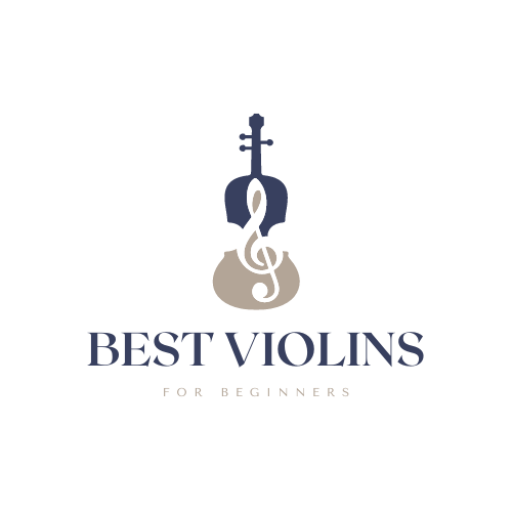Discover a rich array of violin types, ranging from the rustic fiddle with its heritage in folk music to the intricate modern violin used across musical genres. Explore the historical origins and distinctive characteristics of each variation, such as the Baroque violin’s warm tones and the Hardanger fiddle’s haunting quality. From the semi-acoustic violins blending acoustic resonance with electric amplification to the unique Silent Violins and 5-string variations, each type holds a unique place in the evolution of this iconic instrument.
Modern Violin
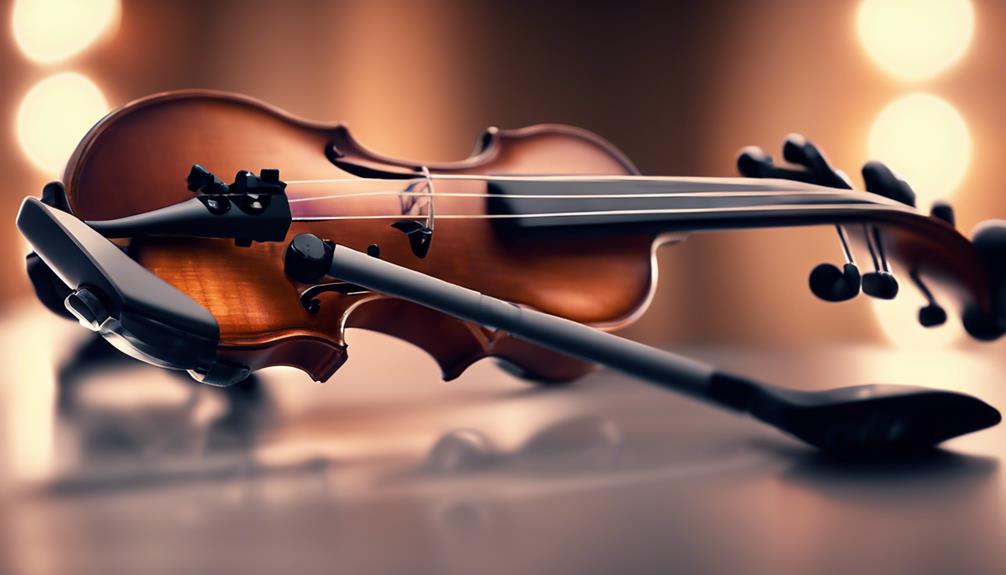
The modern violin, also known as an acoustic or classical violin, is the most widely recognized type of violin in contemporary music performance. Made mainly of wood, with metal and synthetic strings, the modern violin features a design that has evolved over centuries. Its construction typically includes spruce for the top, maple for the back and sides, and ebony for the fingerboard and fittings.
One of the defining characteristics of the modern violin is its f-shaped sound holes, often referred to as f-holes, carved into the top plate. These f-holes play a vital role in allowing the instrument to resonate and project sound effectively. The modern violin is a direct descendant of the traditional violin from the Baroque era, with refinements made over time to enhance its tonal qualities and playability.
The modern violin is a versatile instrument that is well-suited for various musical genres, offering a wide range of tones from warm and mellow to bright and vibrant. Whether played as a solo instrument, in chamber ensembles, or as part of an orchestra, the modern violin holds a central place in the world of classical music and beyond. Its rich history dating back to the early 16th century highlights its enduring popularity and significance in the field of music performance.
Fiddle
In traditional folk music genres, the term ‘fiddle’ is commonly used interchangeably with ‘violin,’ highlighting its role as a key instrument in shaping the distinctive sound and style of this musical tradition. Fiddle music holds a unique place in cultural history, often passed down through generations orally, with players learning tunes by ear rather than through written notation. This characteristic sets fiddle playing apart from classical violin, where sheet music is the primary means of learning.
One interesting feature of the fiddle is the preference for a flatter bridge compared to the arched bridge found on classical violins. This flatter bridge allows fiddlers to play multiple strings simultaneously more easily, facilitating the rhythmic and harmonic complexities often present in folk music.
While some fiddlers may have classical training, many develop their skills within the traditional folk music domain. This blend of influences can result in a rich tapestry of techniques and styles within fiddle playing. The fiddle’s versatility and adaptability make it a versatile instrument in various musical contexts, from lively Irish jigs to soulful Appalachian ballads. Its presence is integral to the vibrant tapestry of traditional folk music worldwide.
Baroque Violin

Originating in the Baroque era, the Baroque violin serves as a precursor to the modern violin, renowned for its unique design and historical significance in classical music. This violin closely resembles instruments crafted between 1650-1750, featuring gut strings that produce warm and mellow tones distinct from modern steel strings. The Baroque violin is often paired with a Baroque-styled bow, which is shorter and lighter compared to modern bows, allowing for the articulation and nuances required for Baroque music.
One defining characteristic of the Baroque violin is the technique used in playing it. Musicians utilize little to no vibrato, emphasizing a pure and clear tone that aligns with the musical aesthetics of the Baroque period. This approach to playing the instrument is favored by specialists in Baroque music who seek to deliver authentic performances true to the historical context.
The rich sound produced by Baroque violins makes them particularly suitable for interpreting compositions by Baroque masters like Johann Sebastian Bach and Antonio Vivaldi. These instruments capture the essence of the Baroque era, allowing modern audiences to experience classical music as it was originally intended.
Hardanger Fiddle
Renowned for its unique sound and intricate decorations, the Hardanger fiddle holds a significant place as the national instrument of Norway. Originating in 1651 by Ole Josen Jasstad, this traditional Norwegian folk music instrument stands out with its 8 or 9 strings, contrasting the standard 4 strings of a violin. The Hardanger fiddle’s design is a tribute to the craftsmanship and artistry of Norwegian culture, featuring elaborate carvings of animals and elaborate patterns adorning its body.
In traditional Norwegian folk music, the Hardanger fiddle plays a vital role, adding a haunting and distinctive quality to the melodies. Its rich history intertwined with Norwegian heritage makes it a cherished instrument among musicians exploring both traditional and contemporary genres. The resonant sound produced by the additional strings creates a mesmerizing effect, captivating listeners with its depth and emotional resonance.
As the national instrument of Norway, the Hardanger fiddle symbolizes the country’s cultural identity and musical heritage. Its distinct sound and ornate decorations serve as a tribute to the craftsmanship and artistic expression that have been passed down through generations. Embraced by musicians worldwide for their unique qualities, the Hardanger fiddle continues to enchant audiences with its enchanting melodies and rich history.
Semi-Acoustic Violins
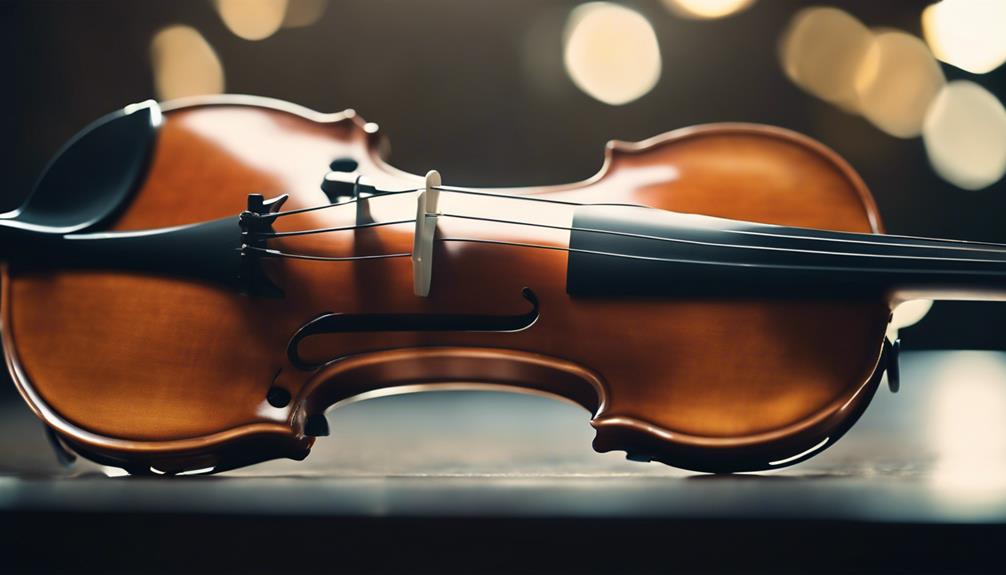
Semi-acoustic violins offer a unique blend of acoustic resonance and electric amplification, providing you with versatile playing options. The built-in pickups allow for easy amplification, making these violins suitable for various genres and performance settings. By modifying the shape of the soundbox, these instruments can enhance their acoustic qualities, giving you control over your sound production.
Amplification Options for Semi-Acoustic Violins
How do semi-acoustic violins provide enhanced amplification options for players looking to expand their sound capabilities? Semi-acoustic violins bridge the gap between acoustic and electric instruments, offering versatile playing opportunities. Equipped with built-in pickups or microphones, these violins capture the acoustic sound and allow for amplified performances. When plugged into an amplifier, players can control the volume and tone, tailoring their sound to different venues or music styles. The shape of the soundbox in a semi-acoustic violin can be modified to optimize amplification, enhancing the instrument’s projection and resonance. This innovation enables musicians to enjoy the rich, traditional tones of an acoustic violin while also harnessing the power of amplification for larger audiences or modern genres. By providing players with the flexibility to switch between acoustic and electric modes, semi-acoustic violins have become essential tools for performers seeking a dynamic and adaptable playing experience.
Versatility in Sound Production
To explore the versatility in sound production of semi-acoustic violins, it is important to understand how these instruments smoothly blend acoustic richness with the amplified capabilities of electric instruments. Semi-acoustic violins feature hollow bodies that allow for acoustic resonance, similar to traditional violins, while also incorporating built-in pickups for amplification, akin to electric instruments. This unique combination offers players a wide range of possibilities in sound production. These violins cater to various musical genres, providing the player with control over both acoustic and amplified sound, making them ideal for performances in different settings.
With semi-acoustic violins, musicians can enjoy the warm, traditional tones of an acoustic violin when played unplugged, and seamlessly shift to a louder, more powerful sound by simply plugging in. The shape of the soundbox in semi-acoustic violins can be tailored to enhance projection and tone, further adding to the instrument’s versatility in sound production. This adaptability makes semi-acoustic violins a valuable tool for musicians seeking flexibility in their performances.
Electric Violins
Electric violins, modern variations of traditional instruments, are specifically designed to produce amplified sound and effects. Crafted from materials such as carbon fiber and synthetic composites, electric violins prioritize durability and a lightweight design. One of the key features of electric violins is their ability to offer additional controls for adjusting volume and tone, providing electric violinists with a wide range of options for versatile sound manipulation. This feature makes electric violins highly sought after in genres like rock, jazz, and electronic music, where musicians aim to infuse a unique twist into their performances.
With their sleek and modern design, electric violins cater to musicians looking to add a contemporary edge to their music. The amplified sound capabilities of electric violins not only make them stand out in terms of appearance but also in terms of performance. Electric violins have become synonymous with innovation in the world of string instruments, attracting players who seek to push the boundaries of traditional violin playing. Whether it’s experimenting with new effects or exploring unconventional sounds, electric violins pave the way for creative expression in music.
Silent Violins
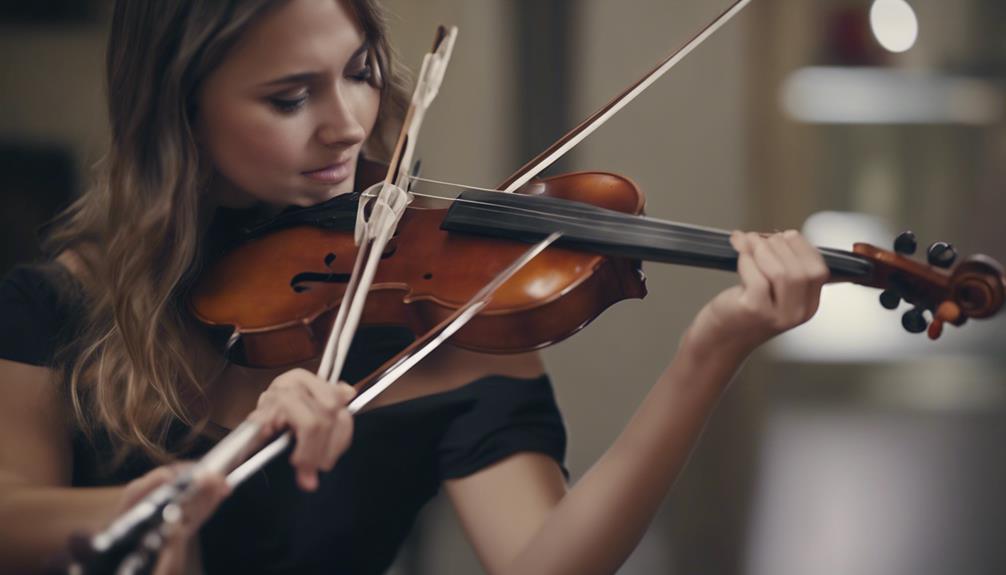
Silent violins offer a unique solution for musicians seeking to practice without disturbing others. These innovative instruments utilize electronic pickups, allowing for silent play while providing options for amplified sound. With headphone outputs and customizable effects, silent violins cater to modern players looking for versatility in their practice routines.
Soundless Practice Options
One of the innovative solutions for practicing the violin without sound disruption is through the use of silent violins. These violins offer a discreet practice option, allowing you to play with headphones or connect to amplifiers for silent playing. Silent violins come equipped with built-in pickups that enable you to plug in headphones or amplifiers directly, ensuring that only you can hear the sound produced. This feature makes them perfect for practicing in shared spaces like apartments, dorms, or late at night without disturbing others. Additionally, some silent violins boast onboard effects and volume controls, providing you with the flexibility to customize your sound preferences. Their lightweight and portable design makes them convenient for travel or on-the-go practice sessions, catering to the needs of modern musicians seeking versatile and adaptable instruments for silent practicing.
Electric Violin With Silence
With advancements in technology, the evolution of violins has led to the creation of instruments that allow for silent practice without compromising on sound quality. Electric violins designed for silent practice cater to the needs of musicians seeking a quiet environment for rehearsal. These silent violins enable players to practice using headphones or external amplification, making them an ideal choice for those residing in apartments or shared spaces.
One of the key features of electric violins for silent practice is their ability to produce sound electronically while mimicking the rich tones of acoustic violins. This characteristic makes them popular among both students and professionals for their versatility and convenience. Additionally, some silent violins come equipped with built-in effects such as reverb and distortion, offering musicians creative options for experimentation and performance. Overall, electric violins designed for silent practice represent a modern solution that combines traditional violin tones with contemporary technology.
Five-String Violin
The five-string violin, with its additional low string tuned to a low B, offers musicians an expanded tonal range for versatile and expressive performances across various musical genres. This instrument provides an extended range that allows for a richer and more diverse tonal palette compared to traditional four-string violins. By incorporating the low B string, players can delve into deeper, more resonant sounds that add depth to their music.
The five-string violin opens up a world of expressive performances, enabling musicians to explore a wide array of musical possibilities. With the main strings tuned to G, D, A, and E, and the additional low string enhancing the lower register, performers can bridge the gap between the violin and viola ranges. This versatility makes the five-string violin a valuable tool for artists looking to push the boundaries of their creativity and musical expression.
Whether playing classical pieces, jazz standards, folk tunes, or contemporary compositions, the five-string violin offers a unique sonic experience that captivates audiences and inspires players. For those seeking to broaden their musical horizons and explore new potentials in their performances, the five-string violin is a compelling choice.
Small Violin
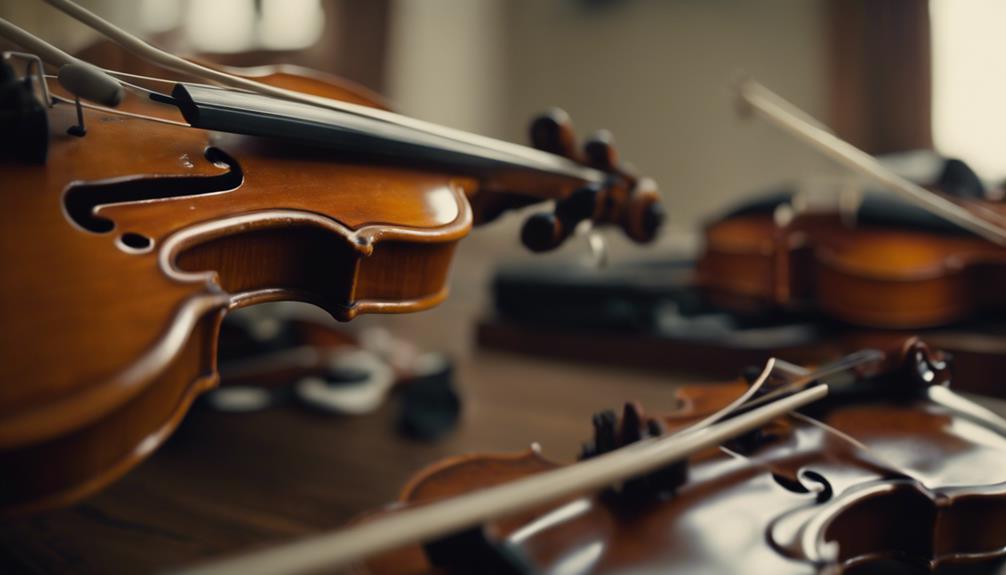
Small violins, designed for easy portability and commonly used by beginners or children, serve as ideal instruments for young or petite players learning and practicing without the bulk of a full-sized violin. These small violins come in fractional sizes such as 1/2 or 1/4, allowing players of different ages and sizes to find a suitable option.
Historically, small violins like the pochette or pocket fiddles were popular among street musicians from the 15th to the 19th centuries due to their compact size. Despite their smaller dimensions, these violins maintain the traditional hourglass shape and construction of classic violins, ensuring that the sound quality is not compromised by their size.
Small violins are particularly favored by beginners or children who are just starting their musical journey. The reduced size makes it easier for young players to handle the instrument and develop proper playing techniques without feeling overwhelmed by a full-sized violin.
In addition to the more common small violins, there are unique instruments like the Hardanger fiddle, which originated in Norway in the 17th century. Known as a hardingfele in Norway, this small violin features distinctive sympathetic strings and intricate decorations, adding to its historical and cultural significance.
Classic Violin
Crafted with precision and care, the classic violin stands as the foundational instrument in Western classical music, boasting an iconic hourglass shape and a rich history of musical excellence. As a member of the violin family, this string instrument is renowned for its elegant design and versatile sound. Classic violins consist of four strings, typically tuned in perfect fifths of G, D, A, and E. The body of the violin is traditionally crafted from resonant woods like spruce for the top and maple for the back and sides, contributing to its distinct tonal quality.
In orchestras, solo performances, and chamber music ensembles, the classic violin plays an essential role, carrying melodies and harmonies with its expressive voice. The instrument’s fingerboard and tailpiece are often made of ebony, adding to its durability and enhancing the overall aesthetic appeal. Played with a bow drawn across the strings, classic violins produce warm, vibrant tones that resonate with audiences across various musical genres.
Throughout history, master luthiers have meticulously constructed classic violins, blending artistry with acoustics to create instruments that inspire musicians and listeners alike. With its timeless design and unparalleled versatility, the classic violin continues to captivate audiences worldwide, showcasing the beauty and emotive power of Western classical music.
Frequently Asked Questions
What Are the 7 Types of Violins?
There are seven types of violins, including electric, Baroque, fiddle, carbon fiber, custom-made, and vintage violins. Each offers unique features and historical significance. Exploring these varieties enhances your understanding of the instrument’s diversity.
What Are the Different Levels of Violin?
As you explore the different levels of violin, you’ll encounter a spectrum from beginner to expert. From student to professional, budget to luxury, entry-level to custom-made, mass-produced to handcrafted, each level offers unique qualities and challenges.
What Is the Most Common Type of Violin?
The most popular type of violin is the modern violin, commonly used by beginners, students, and professionals. It offers a versatile sound suitable for various musical genres and is essential in classical music.
What Are Small Violins Called?
Small violins, also known as mini violins, are ideal for young players. These child violins, ranging from 1/16 to 4/4 sizes, provide a comfortable starting point. They can be called pocket violins or even travel violins due to their portable nature.
Conclusion
To sum up, the world of violins is diverse and rich in history. From the modern violin to the unique sounds of the Hardanger fiddle, there is a type of violin for every musician’s preference. Whether you prefer the classic sound of a Baroque violin or the modern innovation of a semi-acoustic violin, the possibilities are endless. Explore the different types of violins and discover the beauty and versatility of this timeless instrument.

Lisa Maiers, a seasoned musician and dedicated music educator, brings her wealth of knowledge and passion for string instruments to the forefront in her latest guide, “Best Violins for Beginners.” With years of experience nurturing budding violinists, Lisa understands the critical role that the right instrument plays in a student’s musical journey. In this comprehensive guide, she offers invaluable insights and expert recommendations, helping beginners and their families make informed choices that foster growth, confidence, and a lifelong love of music. Whether you’re a parent seeking the perfect violin for your child or an adult embarking on a new musical adventure, Lisa’s expertise will guide you every step of the way.
